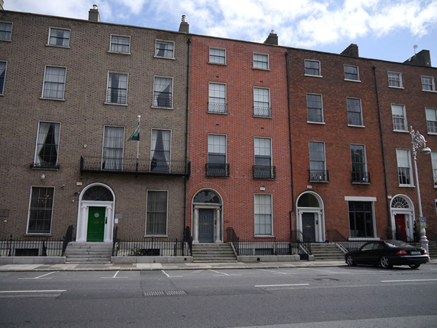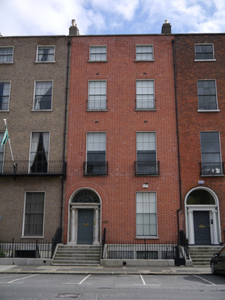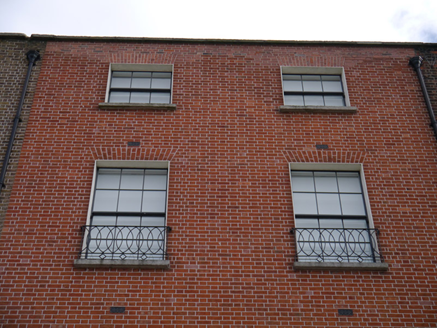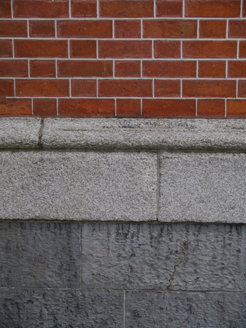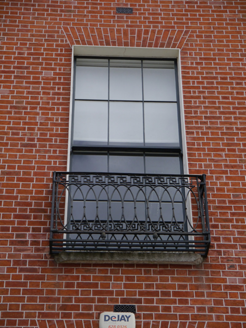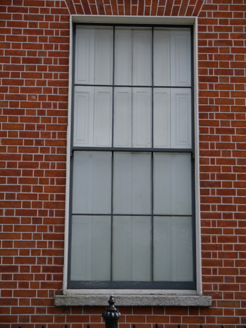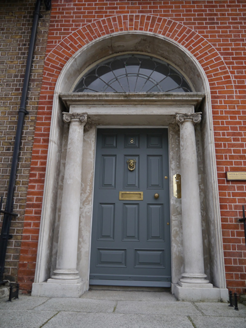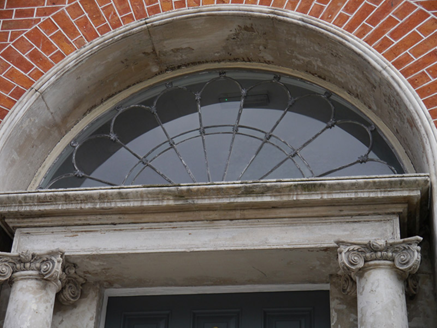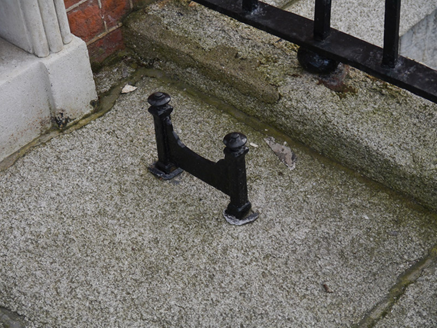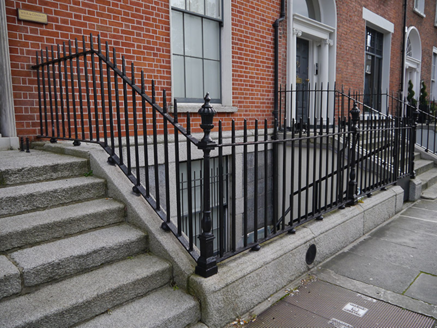Survey Data
Reg No
50930119
Rating
Regional
Categories of Special Interest
Architectural, Artistic
Original Use
House
In Use As
Office
Date
1815 - 1820
Coordinates
316586, 233035
Date Recorded
24/09/2015
Date Updated
--/--/--
Description
Attached two-bay four-storey over basement former townhouse, 1818, with two-storey hip-roofed return to rear (east). Now in use as offices. Pitched roof to west span, irregular M-profiled hipped roof to east, concealed by refaced brick parapet with granite coping. Pair of chimneystacks to party walls with lipped clay pots, rendered to north and brown brick to south. Parapet gutters with cast-iron hoppers and downpipes to either side. Red brick walling laid in Flemish bond and tuck pointed over coursed and tooled ashlar limestone walling to basement beneath granite plinth course. Square-headed window openings with brick voussoirs, patent reveals and granite sills. Granite surrounds to basement opening. Possibly mild-steel guard-rails to second floor openings, decorative cast-iron balconettes to first floor and iron grille to basement opening. Replacement six-over-six timber sliding sash windows with ogee horns, three-over-three to third floor and eight-over-eight to basement. Round-headed door opening with brick voussoirs, moulded reveals and recessed sandstone surround containing a prostyle portico with panelled frieze and moulded cornice carried on Scamozzian-Ionic columns over plinth stops, petal iron fanlight and raised-and-field timber panelled door with brass furniture. Granite entrance platform with cast-iron boot scrapers, approached by seven granite steps flanked by iron railings with decorative cast-iron corner posts on granite plinth, enclosing basement to south-side. Coal-hole cover to pavement. Two-storey modernised mews building to rear plot. Machined brick wall to rear east boundary on Lad Lane with steel roller shutter to vehicular entrance, and tooled ashlar limestone pier to south.
Appraisal
Attributed by Mary Bryan (2006) to Richard Williamson, who built the house as his residence. Well-retained with some replacement fabric insertions, No. 8 forms part of a relatively intact late-Georgian streetscape. Laid out in 1791 by the surveyors J & P Roe, Fitzwilliam Square was the last of the city’s Georgian squares to be completed. Development was staggered, progressing slowly until after the Napoleonic Wars, with the vast majority of houses on the eastern side of the square completed between 1816-22. Although largely homogeneous in character and form, the subtle variations between terraces are indicative of the speculative nature of the Square’s development.
